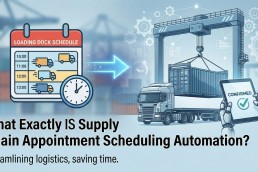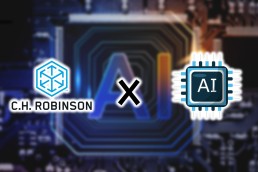Appointment Scheduling Automation Inside Your TMS Workflow

While browser extensions offer a quick and accessible way to start with appointment scheduling automation, some companies seek a more deeply integrated experience. The embedded widget option provides just that, a way to bring scheduling automation directly “within a customer’s TMS”. This approach aims to make automation feel less like a separate tool and more like a native function of the core system that users work in every day.
Unlike an extension that sits outside the traditional workflow, the embedded widget “becomes more native within a customer’s TMS”. It’s integrated directly into the user interface, typically appearing as a button within the relevant shipment or load details screen. This means the process of accessing scheduling automation is initiated directly from the user’s familiar environment.
The workflow is designed to be seamless. By clicking the scheduling button within the TMS, all the necessary information about the shipment is automatically passed through to the automation module. The user can then complete the scheduling tasks in “one single location,” without needing to re-enter data or switch to an entirely different application. Once the appointment is secured, the confirmed details are brought back automatically “into the TMS”.
This seamless integration is a key advantage. It “feels and is part of that user’s workflow,” making it intuitive and efficient. Users don’t experience the friction of having to “go to a different system to take action”. This contributes significantly to adoption and usability, as representatives interact with the scheduling functionality daily within the system they are already accustomed to. Seeing the scheduling button directly within the shipment view reminds them that scheduling is needed and provides an immediate, integrated tool to perform the task.
Implementing an embedded widget is described as a “pretty simple process,” typically requiring about “a week’s worth” of development effort on the customer’s side, though this can vary based on their internal development capacity. This relatively quick implementation allows companies to achieve a high level of integration without the complexity of a full API build.
The embedded widget option retains the “robust features” of the underlying automation application while offering the significant benefit of feeling like it “was built in-house by your development team”. It’s often a popular choice for companies looking to deepen their automation integration after experiencing the benefits of an initial, less integrated approach like a browser extension.


